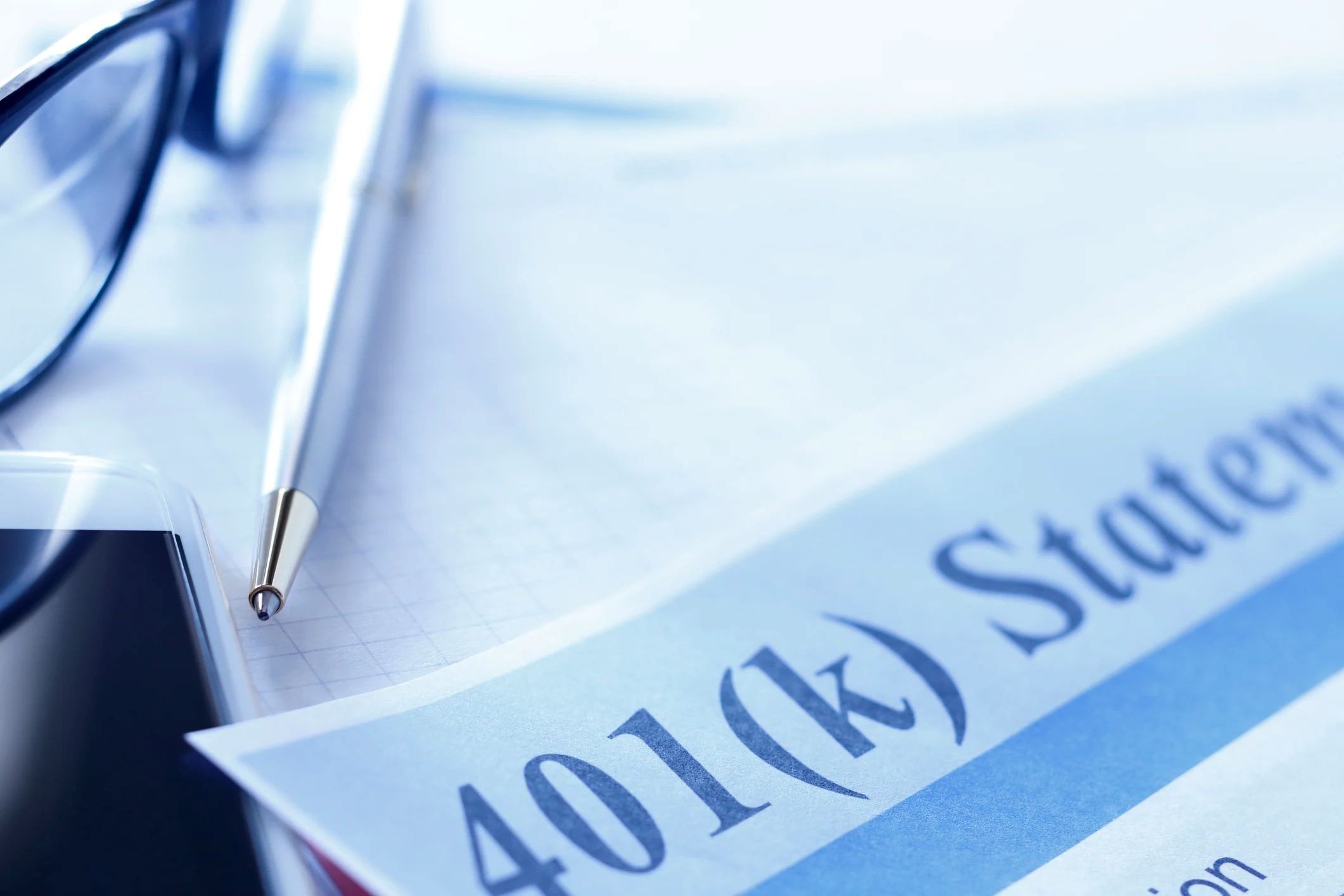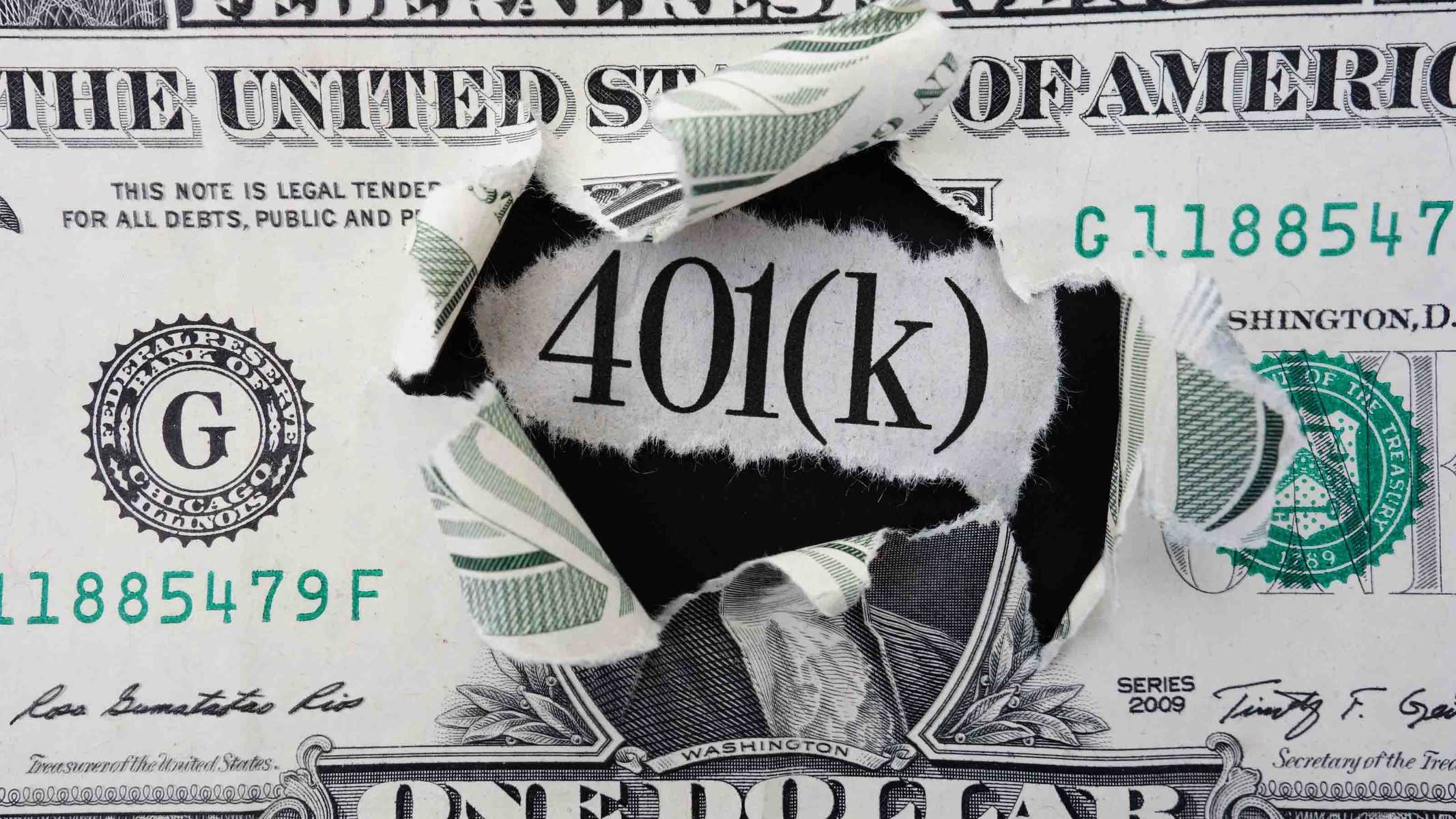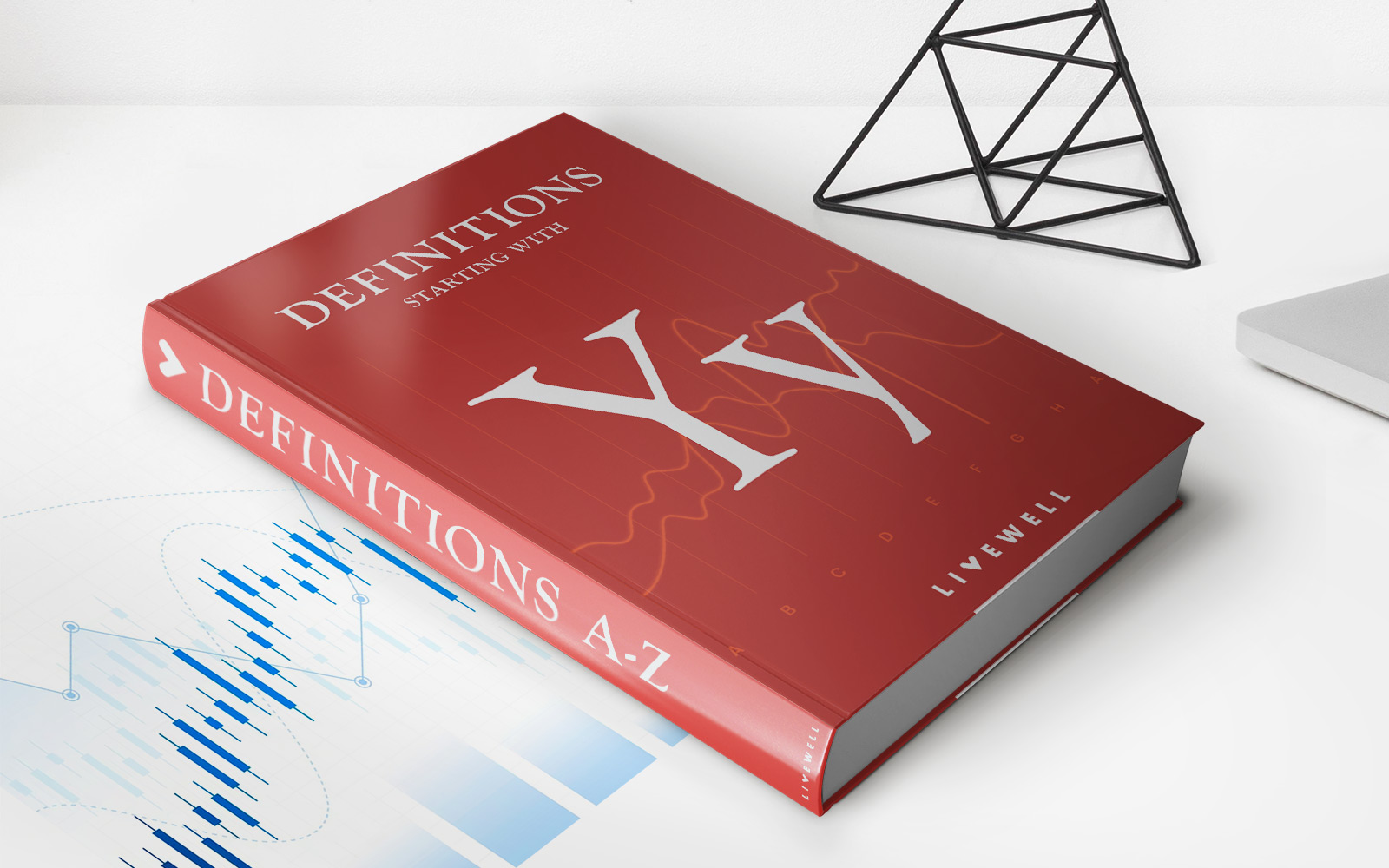Home>Finance>How Long Can A Company Hold Your 401K After You Leave?


Finance
How Long Can A Company Hold Your 401K After You Leave?
Published: October 17, 2023
Find out how long a company can hold your 401K after you leave and ensure you secure your financial future. Get expert advice on finance.
(Many of the links in this article redirect to a specific reviewed product. Your purchase of these products through affiliate links helps to generate commission for LiveWell, at no extra cost. Learn more)
Table of Contents
- Introduction
- Understanding 401K Plans
- Terms and Conditions of Your 401K Plan
- Leaving a Company and Your 401K
- Options for Your 401K After Leaving a Company
- How Long Can a Company Hold Your 401K After You Leave?
- Legal Requirements for 401K Plan Distributions
- Consequences of Delayed 401K Distributions
- Protecting Your 401K Funds
- Conclusion
Introduction
When it comes to planning for retirement, one of the most popular options available to employees is a 401K plan. This employer-sponsored retirement savings plan allows employees to contribute a portion of their salary and receive tax advantages on their contributions. It’s a powerful tool for building a nest egg for the golden years.
However, what happens to your 401K when you leave a company? Many individuals are uncertain about the fate of their retirement funds once they part ways with their employer. It’s essential to have a clear understanding of the regulations surrounding 401K plans and the options available to you.
In this article, we will delve into the topic of how long a company can hold your 401K after you leave. We will explore the terms and conditions of 401K plans, discuss the options you have for your retirement funds, and touch upon the legal requirements that companies must adhere to when distributing 401K funds. Let’s navigate the intricacies of post-employment 401K management and ensure you are well-informed.
Understanding 401K Plans
Before diving into the specifics of how long a company can hold your 401K after you leave, it’s crucial to have a solid understanding of what a 401K plan entails. A 401K is a retirement savings plan that allows employees to set aside a portion of their pre-tax income into an investment account. These contributions are typically made through automatic payroll deductions, making it easy and efficient to save for retirement.
One of the key advantages of a 401K plan is the opportunity for tax-deferred growth. This means that the money you contribute to your 401K is not subject to income tax until you withdraw it during retirement. Additionally, many employers offer a matching contribution, where they contribute a percentage of the employee’s salary to the 401K account.
401K plans offer a range of investment options, such as stocks, bonds, mutual funds, and more. The specific investment options available to you depend on the plan offered by your employer. It’s important to review and understand the investment choices provided and select those that align with your risk tolerance and long-term financial goals.
Another key feature of 401K plans is their portability. This means that if you leave your current job, you can typically take your 401K funds with you. This flexibility allows you to maintain control over your retirement savings and avoid costly withdrawal penalties.
Now that we have a basic understanding of 401K plans, let’s explore the terms and conditions that govern these retirement savings accounts.
Terms and Conditions of Your 401K Plan
Each employer’s 401K plan may have its own set of terms and conditions that dictate how the plan operates and what happens to your funds when you leave the company. It’s essential to familiarize yourself with these terms and conditions to ensure you make informed decisions regarding your retirement savings.
Firstly, your 401K plan may have a vesting schedule that determines how much of your employer’s contributions you are entitled to if you leave the company before a certain period. Vesting schedules can vary, but commonly, employees become fully vested after a certain number of years of service. It’s crucial to understand your vesting schedule to know how much of your employer’s contributions you can take with you if you leave the company.
Additionally, your 401K plan may have rules regarding the timing and frequency of contributions. Some plans allow employees to contribute a percentage of their salary on a bi-weekly or monthly basis, while others have specific enrollment periods or limited contribution windows. Understanding these rules will help you optimize your savings and take advantage of any employer matching contributions.
Furthermore, your 401K plan may impose restrictions on when and how you can access your funds. Typically, early withdrawals before the age of 59 ½ are subject to penalties, including income taxes and an additional 10% early withdrawal penalty. However, certain circumstances, such as financial hardship or disability, may qualify for early withdrawal without penalties. Familiarize yourself with the withdrawal rules of your 401K plan to avoid unintended financial consequences.
Lastly, it’s crucial to review the fees associated with your 401K plan. Many plans charge administrative fees, investment fees, and expense ratios for the funds in which your contributions are invested. These fees can impact the growth of your retirement savings over time, so it’s essential to assess the fee structure and consider alternatives if the fees are excessively high.
By understanding the terms and conditions of your 401K plan, you can make well-informed decisions about your retirement savings and better navigate the process of handling your funds when you leave a company. With this knowledge in mind, let’s explore what happens to your 401K when you part ways with your employer.
Leaving a Company and Your 401K
When you leave a company, whether due to retirement, a job change, or any other reason, you have several options regarding what to do with your 401K. It’s important to understand these options and consider the pros and cons of each before making a decision.
Firstly, you may choose to leave your 401K funds in your former employer’s plan. This option is often available if your account balance exceeds a certain threshold (usually around $5,000). By leaving the funds in the plan, you can continue to enjoy tax-deferred growth and the possibility of employer matching contributions if you return to work for that company in the future. However, it’s important to note that you will no longer be able to contribute to the account, and you may have limited investment options compared to an individual retirement account (IRA).
Secondly, you may opt to roll over your 401K funds into an individual retirement account (IRA). This involves transferring the funds from your former employer’s plan to a self-directed IRA. Rolling over to an IRA offers several advantages, including a broader range of investment options, potentially lower fees, and the ability to consolidate multiple retirement accounts into one. Additionally, an IRA gives you more control over your funds, as you can choose the financial institution and investment strategy that aligns with your retirement goals.
Another option is to roll over your 401K funds into your new employer’s plan, if allowed. This can be a convenient choice if you are satisfied with the investment options and fees of the new plan. It allows you to maintain consolidated retirement savings and take advantage of any employer matching contributions. However, it’s essential to compare the terms and conditions of your new employer’s plan with your old plan and consider factors such as investment options, fees, and portability.
Lastly, you have the option to cash out your 401K. While this may seem tempting, especially if you are in need of immediate funds, it’s important to consider the consequences. Cashing out your 401K before the age of 59 ½ will result in income taxes and a 10% early withdrawal penalty. Additionally, you will lose out on the potential tax-deferred growth and the long-term benefit of saving for retirement. Therefore, cashing out your 401K should be a last resort and carefully considered.
Now that we have explored the options available to you when leaving a company, let’s dive into the timeframe a company can hold your 401K after you depart.
Options for Your 401K After Leaving a Company
When you leave a company, you have several options for what to do with your 401K funds. Understanding these options is crucial to make an informed decision about the management of your retirement savings. Let’s explore the most common options available to you:
1. Leave it in your former employer’s plan: If your account balance exceeds a certain threshold (typically around $5,000), you may have the option to leave your funds in your former employer’s 401K plan. This allows you to maintain the tax advantages and potential growth of your investment. However, you will no longer be able to contribute to the account, and your investment options may be limited compared to an individual retirement account (IRA).
2. Rollover to an individual retirement account (IRA): One popular option is to transfer your 401K funds to an IRA. This provides greater control and flexibility over your investments, as you can choose from a wider range of investment options. It also allows you to consolidate multiple retirement accounts into a single account, simplifying your financial management. Additionally, rollovers to an IRA are generally not taxable events.
3. Rollover to your new employer’s plan: If your new employer offers a 401K plan and allows rollovers, you can transfer your funds from your previous employer’s plan to your new plan. This allows you to consolidate your retirement savings in one account and potentially take advantage of any employer matching contributions offered by the new plan. However, it’s essential to compare the investment options, fees, and overall terms and conditions of both plans before making a decision.
4. Cash out your 401K: While generally not recommended, cashing out your 401K is an option. It involves withdrawing the funds from your account, subjecting it to income taxes and potential early withdrawal penalties if you are under the age of 59 ½. This option should be considered as a last resort, as it can significantly reduce your retirement savings and hinder your long-term financial goals.
Choosing the right option for your 401K after leaving a company depends on various factors, including your financial goals, investment preferences, and future employment plans. Consider consulting with a financial advisor to determine the most suitable option for your unique circumstances.
Now that we have explored the options available to you, let’s delve into how long a company can hold your 401K after you leave.
How Long Can a Company Hold Your 401K After You Leave?
When you leave a company, you may wonder how long the company can hold your 401K funds before you gain access to them. The answer to this question largely depends on the rules and regulations outlined in your employer’s 401K plan and the applicable legal requirements. Let’s explore some key factors that determine the timeframe for accessing your 401K funds after leaving a company:
1. Plan provisions: Each 401K plan may have its own rules regarding when and how you can access your funds after leaving the company. Some plans may allow immediate access to your funds, while others may impose a waiting period. Reviewing the terms and conditions of your plan or seeking guidance from your plan administrator can provide clarity on the specific timeframe.
2. Administrative processes: After you leave a company, it may take some time for the necessary paperwork and administrative processes to be completed before your 401K funds can be distributed. This could range from a few days to several weeks, depending on the efficiency of your former employer’s processes.
3. Regulatory requirements: The Department of Labor (DOL) sets guidelines for the administration and distribution of 401K plans. According to the DOL, companies should distribute an employee’s vested 401K funds as soon as administratively feasible after their separation from the company. Typically, this means within 30-90 days of leaving the company. Failure to comply with these requirements can result in penalties for the employer.
4. Minimum distribution rules: The Internal Revenue Service (IRS) mandates that individuals must start taking required minimum distributions (RMDs) from their 401K accounts after reaching the age of 72 (70 ½ if born before July 1, 1949). These RMDs ensure that individuals withdraw a portion of their retirement savings and pay the necessary taxes. If you have reached the age for RMDs, the company must hold your 401K funds only until the distribution deadline, which is generally December 31 of the year following the year you turned 72.
5. Rollover or transfer timing: If you decide to roll over or transfer your 401K funds to another retirement account, such as an IRA, the timing of the transfer process may impact how long your funds remain with the company. The transfer process can vary depending on the financial institutions involved and the completion of required paperwork. It’s essential to initiate the transfer as soon as possible to avoid any unnecessary delays.
While there can be variations in the specific timeframe for accessing your 401K funds, it’s important to ensure that your former employer follows the applicable rules and regulations. If you experience significant delays or non-compliance, consider reaching out to your plan administrator or consulting with a professional to address the issue.
Next, let’s explore the legal requirements for distributing 401K funds after you leave a company.
Legal Requirements for 401K Plan Distributions
When it comes to distributing 401K funds after an employee leaves a company, there are legal requirements and regulations that employers must adhere to. These requirements are put in place to ensure the fair and timely distribution of retirement savings. Let’s delve into some key legal considerations regarding 401K plan distributions:
1. Department of Labor (DOL) regulations: The DOL provides guidance on the administration and distribution of employee benefit plans, including 401K plans. They require employers to distribute an employee’s vested 401K funds as soon as administratively feasible after their separation from the company. Generally, this means within 30-90 days, although certain circumstances may warrant a longer processing time.
2. Internal Revenue Service (IRS) rules: The IRS sets rules and guidelines related to retirement plans, including 401Ks. One important requirement is that employees must start taking required minimum distributions (RMDs) from their 401K accounts after reaching the age of 72 (70 ½ if born before July 1, 1949). This ensures that individuals withdraw a portion of their retirement savings and pay taxes on the distribution.
3. Vesting schedules: Vesting refers to an employee’s ownership of employer contributions made to their 401K account. Employers may establish a vesting schedule that outlines the timeframe and percentage of employer contributions that become fully vested. This schedule must comply with legal requirements, which typically specify that employers must use either a cliff vesting or graded vesting structure.
4. Spousal consent rules: If an employee is married and wishes to withdraw or take a loan against their 401K funds, their spouse may need to provide written consent. This requirement ensures that spouses are aware of financial decisions that may impact their joint retirement savings.
5. Qualified Domestic Relations Orders (QDROs): In the event of a divorce or legal separation, a court may issue a QDRO, which is a legal document that assigns a portion of the employee’s 401K assets to their former spouse. The employer must comply with the terms and conditions outlined in the QDRO when distributing the funds.
Compliance with these legal requirements is essential for employers to avoid penalties and ensure that employees can access their 401K funds in a timely manner. If you have concerns or experience difficulties with the distribution process, it’s recommended to seek advice from a qualified professional, such as an attorney specializing in employee benefits or a financial advisor.
Next, let’s explore the potential consequences of delayed 401K distributions after leaving a company.
Consequences of Delayed 401K Distributions
When a company delays the distribution of 401K funds after an employee leaves, it can have various consequences for both the employee and the employer. It’s important to be aware of these potential consequences to ensure timely access to retirement savings and mitigate any negative impacts. Let’s explore some of the potential consequences of delayed 401K distributions:
1. Penalties and taxes: Delayed distributions can result in employees facing penalties and taxes. If an employee is under the age of 59 ½ and fails to receive a timely distribution, they may be subject to early withdrawal penalties levied by the IRS. Additionally, the distribution will be taxed as ordinary income if it is not rolled over into another qualified retirement account within the specified timeframe.
2. Missed investment opportunities: The delay in accessing 401K funds can hinder employees from taking advantage of investment opportunities. During the delay period, funds are sitting idle and not generating potential returns. Over time, this can lead to a significant loss of potential growth in the retirement savings.
3. Financial hardships: In some cases, employees may have planned to use their 401K funds after leaving a company to address pressing financial needs, such as paying off debt or covering unexpected expenses. Delayed distributions can disrupt these plans and potentially lead to financial hardships if alternative sources of funds are not readily available.
4. Decreased employee satisfaction and trust: Employees rely on timely distribution of their 401K funds to support their financial goals, including retirement planning. When distributions are delayed, it can erode employee satisfaction and trust in the company. Employees may perceive the delay as a sign of mismanagement or lack of concern for their financial well-being.
5. Legal and regulatory implications: Employers who fail to comply with the legally mandated distribution timeframes may face penalties and legal consequences. The Department of Labor (DOL) may initiate investigations and impose fines for non-compliance. Additionally, delayed distributions can result in reputational damage for the company, affecting both its relationship with employees and its standing within the industry.
It is important for both employees and employers to recognize the potential consequences of delayed 401K distributions. Employees should stay informed about their rights and take appropriate action if distributions are not made in a timely manner. Employers should ensure compliance with legal requirements and prioritize the efficient distribution of retirement funds to maintain positive employee relations and adhere to regulatory guidelines.
Next, let’s explore some practical steps you can take to protect your 401K funds when leaving a company.
Protecting Your 401K Funds
When leaving a company and transitioning to a new phase of your career, it’s crucial to take steps to protect your 401K funds. These funds represent your hard-earned savings and play a vital role in your retirement planning. Here are some practical steps you can take to safeguard your 401K funds:
1. Review your plan’s terms and conditions: Familiarize yourself with the terms and conditions of your 401K plan, including the rules for distributions, vesting, and any administrative processes. Understanding your plan will empower you to make informed decisions and take appropriate action when needed.
2. Keep your contact information up-to-date: Ensure that your former employer and plan administrator have your current contact information, including your address, phone number, and email address. This will minimize the chances of communication breakdown and help facilitate a smooth distribution process.
3. Maintain documentation of your plan: Keep copies of important documents related to your 401K plan, such as your account statements, beneficiary designation forms, and plan summary. Having these documents readily available will be helpful if you need to reference them or provide information to your new employer or financial institution.
4. Consider rolling over to an IRA: Evaluate the benefits of rolling over your 401K funds to an individual retirement account (IRA). An IRA can provide you with greater control over your investments and potentially lower fees. Consult with a financial advisor to determine if a rollover is the right choice for your specific circumstances.
5. Monitor your account: Stay proactive about monitoring your 401K account, even after leaving the company. Regularly review your investment performance, contribution rates, and account statements to ensure everything aligns with your retirement goals. Report any discrepancies or concerns to your plan administrator promptly.
6. Stay informed about regulatory changes: Stay updated on any changes to retirement account regulations. This includes being aware of updates from the Department of Labor (DOL) and the Internal Revenue Service (IRS) that may affect your 401K plan. Stay connected with industry publications or consult with a financial advisor to stay informed.
By taking these steps, you can actively protect your 401K funds and maintain confidence in your retirement savings. Remember that your 401K is a valuable asset, and being proactive about its management is critical to ensure its long-term growth and security.
Now, let’s conclude our exploration of the 401K management process after leaving a company.
Conclusion
Navigating the management of your 401K funds after leaving a company requires a clear understanding of the rules, options, and legal requirements involved. By familiarizing yourself with the terms and conditions of your 401K plan and staying informed about the regulations governing retirement accounts, you can make informed decisions and protect your hard-earned savings.
Remember, you have options when it comes to managing your 401K funds. Whether you choose to leave the funds in your former employer’s plan, roll them over into an individual retirement account (IRA), or transfer them to your new employer’s plan, consider the advantages, disadvantages, and investment opportunities associated with each option.
It’s essential to be mindful of the potential consequences of delayed 401K distributions, such as penalties, missed investment opportunities, and decreased employee satisfaction. Employers also have a responsibility to comply with legal requirements and prioritize the efficient distribution of retirement funds to maintain positive employee relations.
By taking steps to protect your 401K funds, including reviewing your plan’s terms and conditions, keeping your contact information updated, and considering a rollover to an IRA, you can safeguard your retirement savings and stay on track toward reaching your financial goals.
Remember, your 401K is a valuable asset that will support you during your retirement years. Stay informed, be proactive, and seek professional guidance when needed to ensure a secure and prosperous financial future.
Thank you for taking the time to explore the intricacies of 401K management after leaving a company. May your retirement savings journey be rewarding and fulfilling.














